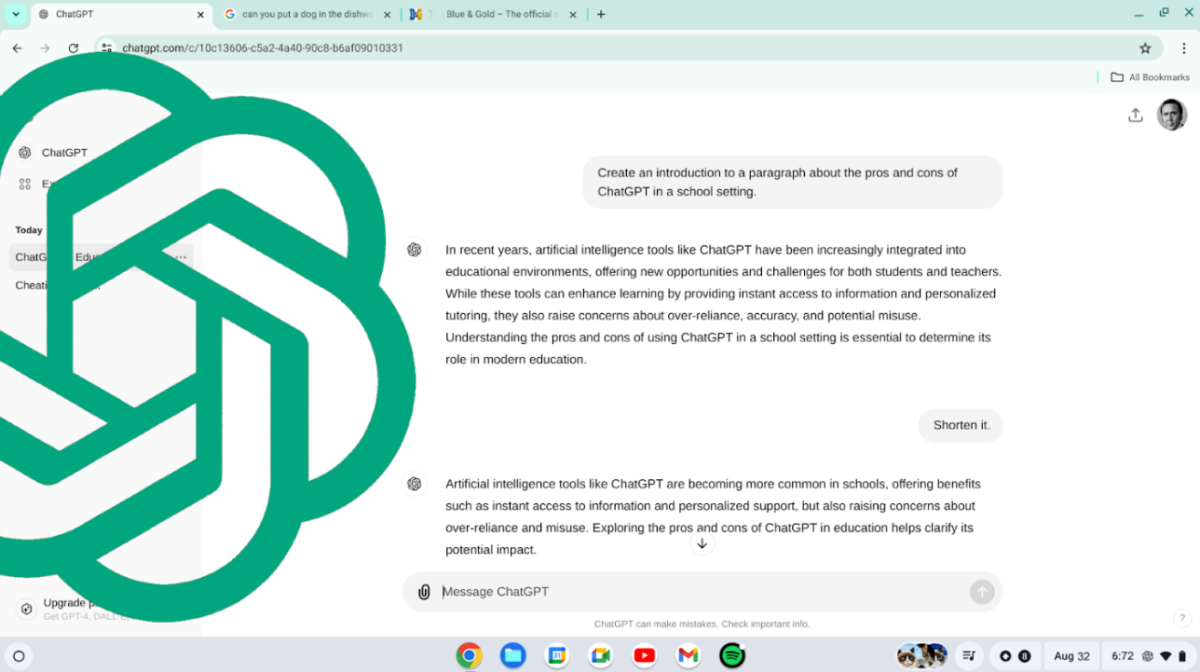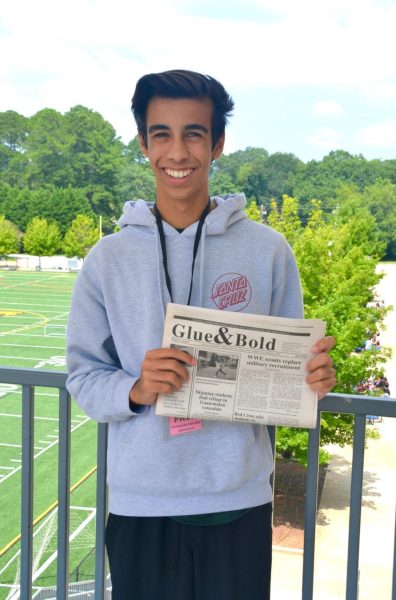“Artificial intelligence tools are becoming more common in schools, offering benefits such as instant access to information and personalized support, but also raising concerns about over-reliance and misuse. Exploring the pros and cons of AI in education helps clarify its potential impact.”
That entire introductory paragraph was not written by a human. It was written by ChatGPT. If you’re unfamiliar with it, ChatGPT is an artificial intelligence language model that can search the web, or even write stories and essays with a one-sentence prompt given by its user. Over the past few years, ChatGPT has become increasingly more advanced and, in turn, more popular. Because of its widespread availability, questions have been raised about the potential ethical problems with using ChatGPT. Here at Chamblee, some students and teachers believe that ChatGPT has no place in a school, while others believe that AI language models have the potential to be a learning tool.
“I’ve used ChatGPT to help me understand different math problems,” said Willie Atkinson (‘27) “In the class I’m in now, AP Pre-calc, sometimes when I don’t understand the concept and I can’t find it on Youtube, I ask [ChatGPT] to explain and I can use that to help me excel in the class.”
Some people, such as James Demer, an AP language teacher at Chamblee, believe that ChatGPT can function as a more intelligent search engine.
“You can ask it a question and it searches the internet and comes up with a good answer that’s often more detailed than a regular search,” said Demer.
Other teachers, such as Chamblee’s software teacher, William Thompson, believe that ChatGPT is useful because it can serve as a template to student assignments.
“I think schools should use ChatGPT in a positive way, because you can reinforce lesson plans. Students can create a lesson or do a paper and compare their writing to ChatGPT,” says Thompson, “It does definitely have some significance in education. Everyone has to get to the point where they want to use it. Not to be afraid of it, but use it.”
Every year, Thompson has all of his classes do a lesson on ChatGPT.
“[My students] want to see how ChatGPT is affecting our lives and…how AI is interwoven in every aspect of our life. From gardening to pets to food, the list goes on. There’s nothing that we do in this life right now without AI.” said Thompson.
Even with all of ChatGPT’s uses, Chamblee students and teachers still believe that there are downsides to the AI chatbot.
“You can use it for understanding many concepts, but you have to take everything with a grain of salt, especially in language usage,” says Atkinson, “I realize that sometimes when you’re trying to understand a part of a text or understand how to comprehend something, it might not always give you what you want.”
Outside of the accuracy of its responses, there are concerns about the limits to ChatGPT’s creativity.
“AI’s not going to be making movies that are interesting,” said Demer, “or artwork that’s interesting, or novels that are interesting, or anything else that has some element of surprise, or blending of genres, or any of these things that we love as humans.”
And of course, there’s the ever-present problem of ChatGPT being used for plagiarism.
“AI has already made my job stupider,” says Demer, “and it made me change the way that I teach because I have to try to guard against kids using ChatGPT. Now I don’t assign things that are easily done on ChatGPT. It requires no creativity or critical thinking.”
This opinion is shared by students, as Atkinson emphasizes that ChatGPT is a tool and not a replacement for his work.
“I don’t think it should be used to do your work. That’s just something I hold myself to. I don’t use it to outright do everything. I use it like an assistant.” said Atkinson.
With the growing popularity of AI, arguments are also being raised about how ChatGPT’s source material impacts the responses it gives, as well as its self-learning capabilities.
“There are biases that could be built into ChatGPT. It doesn’t look at diversity,” says Thompson, “The thing about ChatGPT now is, it’s self-learning, so when it starts to self-learn, who controls that? If it takes a wrong turn, what do you do?”








